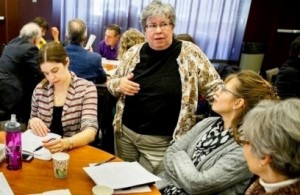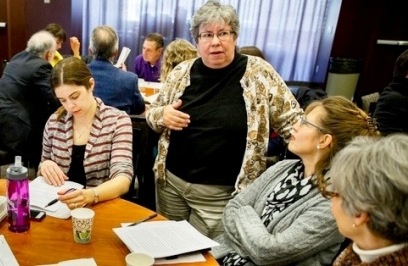The St. Thomas Strategic Planning Steering Committee appointed six student representatives to work alongside staff and faculty members on policy, bringing a new perspective to the committee.
Steering Committee co-chair Michael Cogan said President Julie Sullivan made it clear that student participation was essential because students play a key role in everything St. Thomas does.
“They have a view that a lot of staff and faculty will not have, so we want to make sure that view is represented adequately,” Cogan said. “I think if we were to take just faculty and staff, you’re missing a very important aspect of what’s happening at the university.”

Of about 40 students who were nominated to participate in the process last month, six were selected to join subcommittees. Staff, faculty and students all underwent the same selection process.
Sophomore Juan Ferreras Camilo, a member of the Globalization Subcommittee, said student participation is important in order to create change.
“If we are going to change how the university sees globalization, how the university sees the Catholic community and how the university sees excellence in the faculty and excellence in the students, you need the voice of the students,” Camilo said.
Camilo said this desire to create change is what inspired him to participate in the planning process.
“I felt I had something to give, something that could make a difference in the community,” Camilo said.
Cogan said students now make up about 10 percent of the group. The students will work on equal terms with faculty and staff.
“Everybody is a peer,” Cogan said. “What we really wanted to see was them (students) actually in the middle of this, making sure they’re representing other students.”
Senior Jordan Graf, a member of the Diversity and Inclusive Culture subcommittee, said he is excited to see dialogue between the different groups that make up St. Thomas.
“There’s something really special and really uplifting about people being able to come together from the different parts of campus, from the different mission statements that together make St. Thomas what it is,” Graf said. “We need each mission on campus to really be that successful and that empowering university.”
In addition to providing a voice for the student population, Camilo and Graf said they hope to gain personal experience from the cooperation and diversity of the project.
“To be able to see each department, each faculty cohort, each student group come together in dialogue and in understanding is going to be just a tremendous experience,” Graf said.
Camilo said this experience will further expose him to the workings of the university and affect how he views it.
“You get all these diverse opinions and different points of view that in some way will impact the way that you carry yourself and the way that you think,” Camilo said.
Overall, Cogan said the student participation will have a strong effect on the entire process.
“They can provide a really important viewpoint that we can then implement into the strategic plan,” Cogan said.
Rebecca Mariscal can be reached at mari2162@stthomas.edu.



